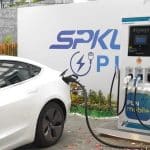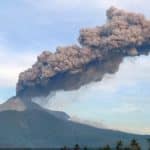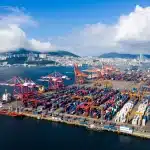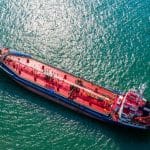Liga Asuransi – This afternoon I just arrived at one of the clients. An old friend who just had an accident. The shop where his business was located caught fire a few days ago, which destroyed the entire building, machinery and stock of raw materials and goods.
Shophouse insurance has been placed through insurance brokerage companies since 6 years ago. Every time we send an extension reminder, we always remind them in writing and verbally so that they review the sum insured to see whether it is still appropriate or whether it needs to be adjusted to the latest value.
It is our duty to help our customers when claims like this occur. We have been talking by phone and email since this incident occurred. Make a preliminary report to the insurance company that guarantees it. And the claims process has gone well, so far so good. There are even plans to conduct a survey of the location together with a loss adjuster in the next few days.
Because this client is a good friend, it seems he felt more comfortable coming and meeting directly with me and the team to discuss his claim. As a friend and client, I convey our concern for the disaster that occurred. I assured him that his insurance policy was active and could cover any fire that occurred.
From our conversation, I just received information from this colleague that it turns out the value of his assets is greater than the value in the insurance policy. In fact the figure could be twice as large.
Hearing this explanation, I saw the potential that this client would not be able to cover the real losses he experienced from the insurance claim reimbursement that he would later receive. Too bad.
Even though he already had the awareness to buy insurance to protect his business from unexpected risks. However, due to his lack of awareness to always review the sum insured, he was unable to get the maximum replacement value. Every year, at the time of renewal, we remind clients to review their insurance money to see whether it is in accordance with the current value.
As an insurance broker with more than 30 years of experience, incidents like this often happen. Many of our clients do not follow the advice of insurance brokers to always review the coverage value of the insurance policy.
Naturally and under normal circumstances, the value of company assets will increase every year along with the company’s development. Therefore, the insurance coverage value should also be adjusted to the last asset value before the insurance policy guarantee begins. Or the value can be increased during the insurance period by making endorsements and adding insurance premiums.
So that disappointment like that experienced by our clients does not happen to you, we would like to give you the following advice:
- Understanding Sum Insured (Sum Insured)
The sum assured is a sum of value in currency, either in rupiah, US dollars, Singapore Dollars and others, which describes the true value of the assets or goods to be insured.
- Basic value of Sum Insured
To determine the basis for calculating the sum insured, several bases are used, including New Replacement Value (NRV), Reinstatement Value, Market Value, Indemnity value, agreed value, sublimit value and other forms agreed between the insurer and the guarantor.
- New Replacement Value (NRV)
With NRV it is required that the insured value be based on the New Replacement Value. Or the latest price of the item to be insured even though the item is old or used. For example, 1 unit of Excavator type 1000 type heavy equipment made in 2015 has a current market price of USD 250,000 while the new price is USD 750,000. So the sum insured for this heavy equipment insurance is USD 750,000, not USD 250,000.
This is where most of our clients usually object. Why are used units priced like new ones? The premium becomes bigger. But because that is the basic principle for calculating the sum assured in a particular insurance policy, the insured must follow it. Usually insurance policies that use the NRV principle are Engineering Risks such as Construction Erection All Risks, Heavy Equipment Insurance, Electrical Equipment Insurance, Machinery Breakdown and several other insurance policies.
Actually, the reason for using NRV is good and makes sense. The purpose of using the NRV principle is to restore the condition of damaged goods to the condition before the damage occurred. Neither better nor worse.
If the excavator unit that is damaged is from 2015, then an accident occurs which causes the components to break and damage, for example the hydraulics. The new value of the component is USD 25,000. If the sum assured is based on NRV, the replacement value is 100% the same as the claim value and is only deducted from your own risk as in the insurance policy, for example USD 5,000. However, if the sum assured is based on market value, the replacement will be considered under insurance (below the sum assured) and the claim calculation will be calculated based on prorata, namely the comparison between the required sum assured and the sum insured written in the insurance policy. USD 250,000/USD 750,000 = 33%. Thus the claim replacement value is 33% of USD 25,000 = USD 8,250. There is a difference of USD 16,750 which will be borne by the insured himself. Is it possible that with this amount of USD 8,250 you can buy a hydraulic. Which might be used hydraulics, but can it restore the unit’s power to its original state? Besides, almost no one sells used hydraulics. The easiest thing is to get new hydraulics.
- Reinstatement Value Clause (RVC)
RVC is the rebuild value. This is more suitable for insurance objects in the form of buildings, property and other static physical facilities. In principle, RVC is the same as NRV. RVC requires that the sum assured be determined by calculating the rebuild value. For example, a 40-story building was built in 2015 with an insured value of USD 50,000,000. If insured in 2020 where there has been an increase in property prices and also the price of katakana goods by an average of 5%/year, the building’s current RVC is around USD 64,000,000.
The calculation principle is the same as NRV, where if the sum assured is below RVC then if a claim occurs a prorate calculation will be applied.
- Market Value – Market Price
Determining the insurance sum insured based on Market Value (MV) is more often used for motor vehicle (MV) insurance. The sum assured is calculated based on the market price of the vehicle at the time it was insured. For example, a 2015 Mercedes Benz type C 300 sedan has a current market price of Rp. 750,000,000. The new price for the same type of car is Rp. 1,250,000,000. So the insurance money is Rp. 750,000,000. The sum assured will be considered under insurance if the figure is less than Rp. 750,000,000. The claim calculation will be calculated based on the prorate principle.
The question is why can the sum insured be applied for motor vehicle insurance based on market prices and not new prices? The technical answer is that different types of insurance have different insurance principles. The logical explanation is that the potential volume of motor vehicle insurance is much greater than engineering insurance. In this way, the premium received is also higher, so it is enough to cover claims and the difference between used goods and new goods. One more important thing is that motor vehicle insurance premium rates are much higher, between 3 and 10 times more expensive. For example, the heavy equipment insurance rate is around 0.75%/year while the vehicle insurance rate is 2.1%/year.
- Indemnity Basis (Price after deducting depreciation)
The insurance value is determined based on the value stated in the insurance policy by taking into account the depreciation value factor. Thus, the replacement value corresponds to the stated price and is reduced by the depreciation value. In the policy, whether the replacement value is sufficient to cover the losses incurred or not.
The use of indemnity basis is rare because it does not suit the needs of the insured who expects compensation in accordance with the losses experienced.
- Agreed Value (Agreed Price)
By using the Agreed Value, the insurance company agrees with the value proposed by the insured and will not apply the proration principle if it is later discovered that the insured value is lower than the market value or replacement value. The most frequent use of agreed value is in ship insurance (Marine Hull) insurance.
That is a brief explanation of the importance of determining the sum insured (sum insured) in an insurance policy. At the start of insurance coverage, ensure that the insured value stated in the policy reflects the actual value based on the basis of insured required in the policy.
Don’t just want to save on premiums and reduce the insurance value. This method is very detrimental. Like example No. 3 above. If the insured insures based on NRV, namely USD 750,000, assuming an insurance premium of 1%, then the premium paid is USD 7,500. But with a value of USD 250,000 and a premium rate of 1%, the premium is only USD 2,500. There is a savings of USD 5,000. But as a result, there was a shortage of claim reimbursement that could not be replaced by insurance amounting to USD 16,750. That’s just an example for a small claim, what about claims for larger ones or total losses?
For brokers not to hesitate to remind (force…) clients to always use the insured amount based on the value required by the insurance policy. To help them avoid disappointment due to underpaid claims.
To avoid disappointments like the ones above, always use the company’s services insurance broker. They are insurance experts who know and master the ins and outs of insurance so they can provide maximum benefits for insurance coverage.
For shipping insurance on your goods, contact L&G now!
—
LOOKING FOR PROPERTY INSURANCE PRODUCTS? DON’T WASTE YOUR TIME AND CONTACT US NOW
24 JAM L&G HOTLINE: 0811-8507-773 (CALL – WHATSAPP – SMS)
website: lngrisk.co.id
Email: customer.support@lngrisk.co.id
—













